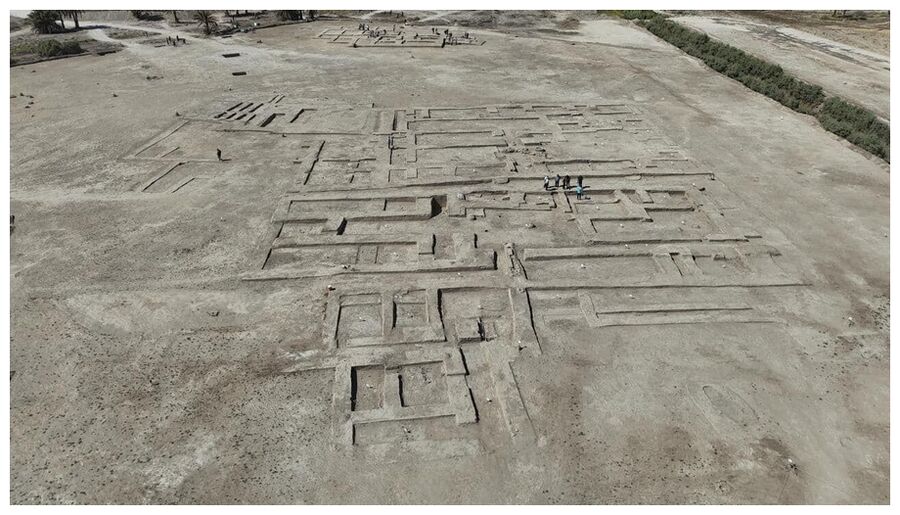
© Iraqi State Board of Antiquities and Heritage (SBAH)
The Director of the Excavations Department accompanied the Missions Follow-up Committee to site 19/3 in Sector 38 of Al-Fayyadiya district to examine the work of the archaeological mission in the Babil governorate, according to a statement released by SBAH.
Under the direction of archaeologist Quhtan Abbas Hassan Aboud, the mission has uncovered information that provides fresh insights into ancient Mesopotamian life and culture.
During the visit, the head of the committee received a detailed explanation from the mission leader regarding the findings of the excavation. The Al-Fayadiya district's 19/3 excavation site is separated into two sectors, A and B. There are two layers of archaeological stratification in Sector A, which is 6 dunums (roughly 6,000 square meters) in size.

© Iraqi State Board of Antiquities and Heritage (SBAH)Among the findings in Babylon are tablets with cuneiform writing.
According to Soheil Al-Tamimi, Director of the Department of Excavations, who was present during the visit of the Mission Monitoring Commission, the first layer corresponds to the Sasanian period. However, this layer has suffered considerable damage due to erosion and human intervention over the centuries.
The second layer dates to the ancient Babylonian period, and the better-preserved, which has sparked special interest among researchers who hope to uncover more about the characteristics of urban life during that era.

© Iraqi State Board of Antiquities and Heritage (SBAH)Cylindrical seals.
The missions committee suggested that all excavation work be disclosed, that the work be photographed and drawn, and that the artifacts be recorded by the scientific contexts that SBAH adheres to.

© Iraqi State Board of Antiquities and Heritage (SBAH)
Source: Iraqi State Board of Antiquities and Heritage (SBAH)
Source link

